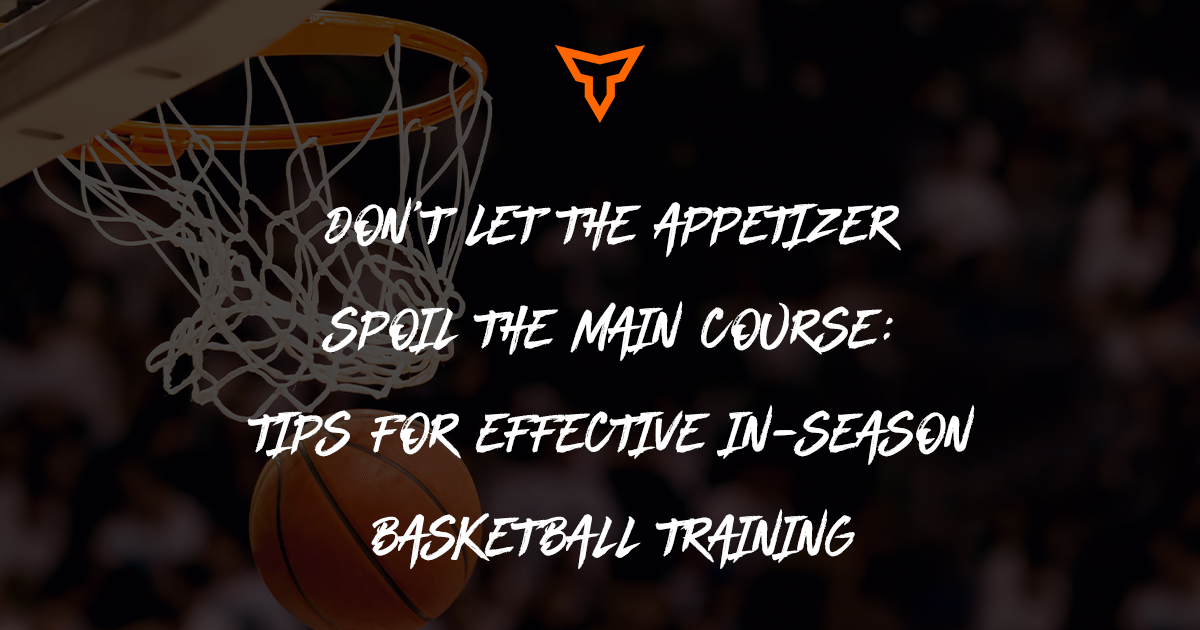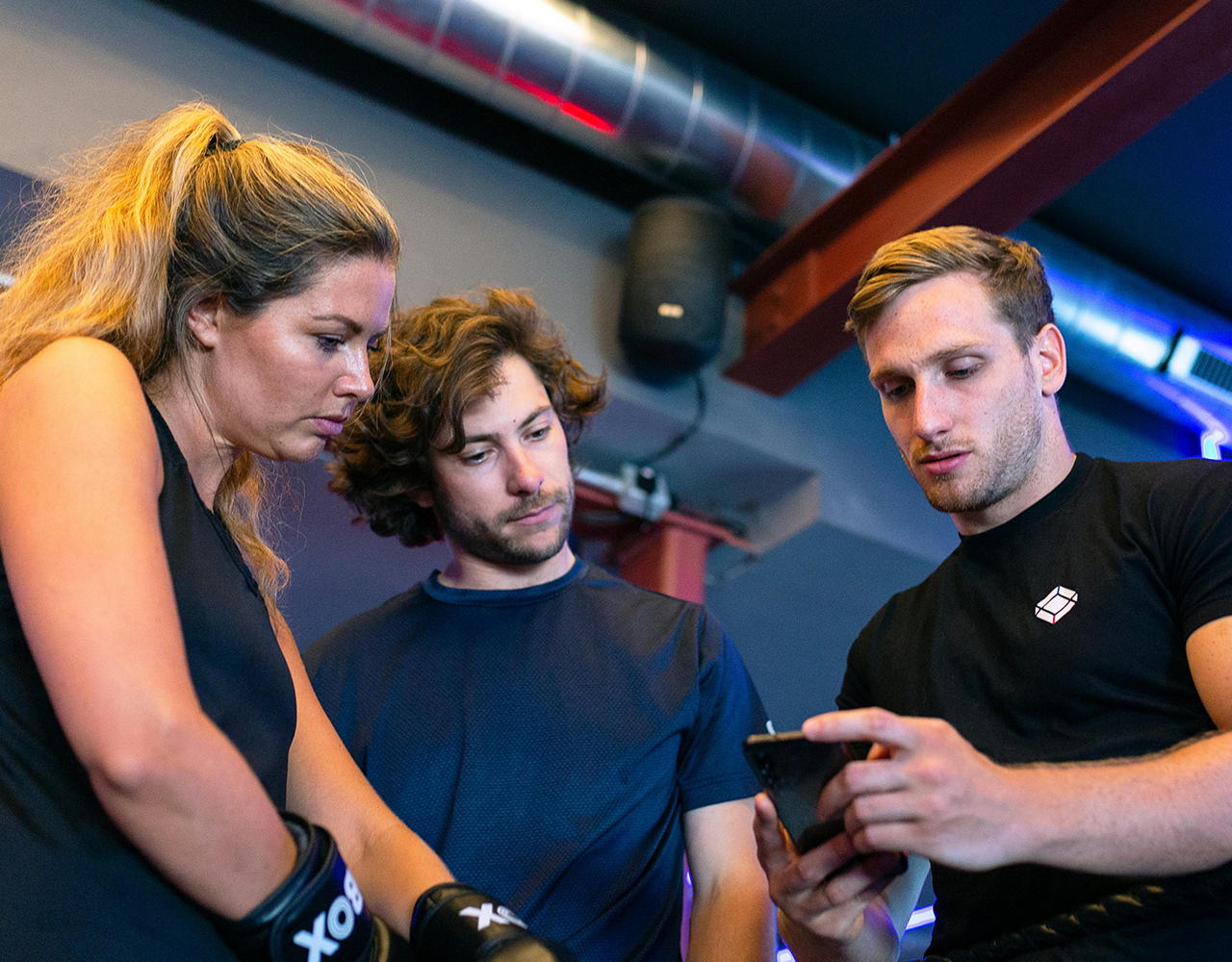The Power of Microdosing
Off-season training as a strength & conditioning coach is always an exciting time. We get to apply very concentrated loads and stressors upon the athlete to take their physical preparation to new heights. No worrying about practice and meetings, nor about the stress and fatigue that comes with a long season. This is our time: a time where more traditional strength training methodologies are applicable and extremely effective.

Then comes the in-season training phase. Availability and training time are at a premium, and you are trying to get creative in how you compete for these slots. In many team sports, it is not uncommon for an S&C coach to be allotted only 1-2 training days a week. In fact, some teams receive no consistent training time, with the S&C coach delivering training sessions infrequently and sporadically.
At the Sacramento Kings Performance Symposium in 2018 I first heard the term “microdosing.” Cory Schlesinger was talking about the Stanford Men’s Basketball program, the exercises, themes of training, and how it all fit together neatly on each day. It was the method and way of thinking that I had been searching for, and gave me the start I needed to develop my own in-season formula.
Microdosing Applied:
My first chance to really implement an in-season program built around microdosing was the fall 2021 season for the University of Pittsburgh Women’s Volleyball team.
Microdosing is a way to efficiently train in-season around the constraints of travel schedules, practices, competitions, frequent meetings, the athletes’ classroom demands and the overall endless battle for training time. It gives us more frequent exposures throughout the week to load the athlete, while keeping the acute dosage small enough to limit its impact on that day.
Instead of doing a low level court warmup for 10-15 minutes, I have them in the weight room for 20-30 minutes prior to practice getting a more specific stimulus that will elevate their level of play.
Travel is a major hurdle for most programs, and movement is medicine for our girls upon arrival to a new location. When traveling on the road, I believe a training session is a great way to get the athletes activated when getting off the plane or bus. We are moving to recover, as well as moving to prime the CNS for the practice to follow. Coming out flat during a travel practice is a frequent occurrence for many teams, and it is my job to elevate their level of play going into these events.

The Playbook
Field Guide for Microdosing
How can you apply this specific type of training to your setting?
Range of motion, limb involvement, Ground Contact Time, TUT, & Contraction Type are key factors when designing and prescribing workloads to our athletes. By manipulating range of motion, we are able to expose the tissue to different stressors and/or get more specific with the joint ranges we want to load. We are able to manipulate bilateral and unilateral exercises to add more system stress or become more specific with certain positions we want to hit. Plyometric progressions will be largely periodized around contact times and how intense the impacts are. Contraction type plays a vital role in both offseason and in-season periods: manipulating triphasic means in the earlier prep periods and moving to very specific qualities to align with court stressors in the in-season phase.


Microdosing Phase
Once we start preseason it is a training shift: one towards microdosing. The preseason block up until we start conference play is 12 weeks in length. This allowed us to go back and touch 2 complete cycles of eccentrics, isometrics, and concentrics. We wanted to keep the exposure in and retain those qualities as long as possible going in to conference play.
Conference play is the start of a very specific type of microdosing, where stressors in the weight room align with stressors on the court.

Conference play is structured around Friday and Sunday competitions. This leaves Monday being our only off day, and every other day of the week we have training or competition:
Monday – Recovery
- Regeneration Day
Tuesday – Strength (25-30 min)
- High Force
- Clean variation and Squat day
- Nordics
Wednesday – Power & Accessory (20-25 min)
- Trap bar (concentric work)
- Unilateral work
Thursday – Speed (15 min.)
- Loaded Jumps
- Med Ball Throws/Slams
Friday – Game
Saturday – Primer / CNS Re-charge (15 min.)
- Speed Cleans
- Box Jumps
- Accelerated jumps
Sunday – Game
Monthly and Weekly Examples


It’s important to note that the Thursday and Saturday lifts are sometimes completed in our home weight room and sometimes completed on the road. We must be prepared to be adaptable from an equipment standpoint and creative!

You will notice that the length of the sessions get shorter, the load drops, and the speed/intent of the session goes up as the week progresses.
Important Considerations
The playbook that we use to provide guardrails to our programming was all about the application. As we all know, there are limitations and important considerations to understand prior to undertaking any training style. Knowing what bumps and roadblocks lie ahead is key to maintaining momentum throughout the season.
Timing and Length of Sessions
As previously discussed, how much time you allocate to each session typically decreases across the week as we approach competitions. We move from 30 minute sessions early in the week all the way down to 15 minute sessions the days prior to games.
Lifting prior to training has yielded big results for us as a team. This is a more effective way to utilize the warmup period where we are doing dynamic stretching and tissue prep.
If you do not have a lifting facility close to your court or field, this could cause an issue. In these instances, you may need to lift the team earlier in the morning to allow for travel time or even post practice.
Being flexible and adaptable with microdosing is extremely important to being able to work with the scheduling constraints you may have.
Volume and Road Lifts
As the season progresses and fatigue starts to accumulate more and more, it is important to account for weekly training volumes. Minimum effective dose becomes key while accounting for residual training adaptations. It becomes key to adapt and account for team travel, outside stressors, competitive matches, and post-season play. The deeper you get into the season the less volume you need in the weight room to continue moving the needle forward. We strategically place regeneration days and primer days before and after competitions to build in recovery. Not every day needs to be a maximal training stimulus.
Monitoring performance and fatigue is extremely important to ensure we are applying the proper stimulus and adapting to the training load. Microdosing is the perfect time to implement frequent and varied testing across the week, when appropriate, because of the frequency the athletes are seen in training. More training sessions equal more opportunities to test.
Force plate testing is the backbone of our performance testing. Monitoring jump height, RSI, and jump strategy is a very effective way for us to monitor general physical underpinning qualities, notably in volleyball.
Gymaware and velocity-based technology is the second biggest arm of the performance monitoring that we utilize. When in-season, and lifting daily, it is important to program and fluctuate training based off the readiness of the athletes. By prescribing training session loads based off of velocities, we can account for normal peaks and valleys in readiness.
RPE and wellness questionnaires are great monitoring tools in regards to gauging fatigue and readiness. By being consistent and quantifying perceived readiness variables we are getting a more complete picture of where the athlete is in comparison to performance metrics and training loads. This helps us close the loop on monitoring the different areas of health and wellness.
Throughout the week we usually do countermovement jump testing on Monday or Tuesday (furthest day out from gameday) on that same day we squat with Gymaware to monitor readiness after playing 2-3 games over the weekend. Our athletes fill out wellness questionnaires daily to help make adjustments for training for practice and in the weight room. Please see example reports for both of these below.


Wrap Up/Conclusion
Microdosing has been a very powerful tool for us to implement across the in-season periods. It has allowed us to maintain a high level and healthy training environment across the season. It would be a valuable asset to have research studies conducted around the positive effects microdosing can have. From perceived readiness, physiological improvements, and improved play on the court, research studies conducted within practical environments can improve insights to the benefits of this type of training.
Many sports have implemented microdosing with success, but it would be valuable to see more environments start to implement this within their teams and share data related to their successes and failures. From testing metrics to performance on the field, having more anecdotal evidence around specific team experiences will only lead to reducing the stigma around daily training sessions.
Subscribe to our blog
Subscribe to receive the latest blog posts to your inbox every week.
Related posts

Don’t let the Appetizer Spoil the Main Course: Tips for Effective In-Season Basketball Training

Fitting Speed Training Into Your Practice Schedule

